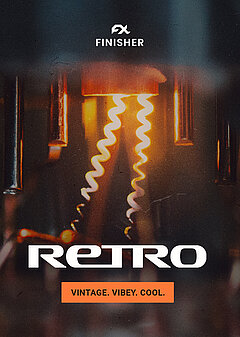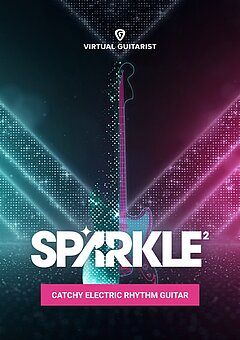How to Create a Warm R&B / Lofi Beat
A quick guide to dialing in the dirt, building a thumping beat and locking in the perfect groove in no time.
NOVEMBER 26TH, 2022
Dive deeper into the pleasant warmth of R&B and lofi and find out why saturation is an important ingredient to awaken the intimate feel of these genres.
Building a warm sound
The first thing to understand is how the classic warmth of R&B and lofi came to be — this was largely a product of the natural saturation introduced by the electrical components in the studio hardware used to record R&B acts. This was partly unintentional, but producers ended up loving the sound, plugin manufacturers purposely built it into tons of different plugins and the rest is history. That warmth you hear is largely the effect of saturation, subtle distortion that provides a desirable color to the sound and dirties up the peaks and transients of everything that gets fed into it.
Another key component is the low-grade noise that’s present in the audio even when no other sounds are playing. Noise is present anytime audio is amplified in the analog realm; the differentiating factor is the quality of the noise and how much there is. With mic preamps this is typically something manufacturers go to great lengths to reduce as much as possible ... but with guitar amps simulation, vinyl static and other less subtle sources, this is a powerful means to add character to your mixes.
For an easy trick, start off by adding vinyl crackle to the background of the mix. This isn’t a novel idea, but whether or not you choose to keep this step makes a huge difference to the character of the song. (You don’t have to keep this if you don’t think it helps the overall sound) From there, simply throw Finisher RETRO onto specific tracks or even lightly across the whole mix and tweak the presets until you’re happy with the result. From there, sculpting a warm R&B sound is very straightforward!
Building the core beat
Let’s start off with the central focus of the beat in “rhythm & beat”: drums. Without a solid performance from the kick, snare, hi hats and any aux percussion, no R&B song can ever truly lock together. As with many other genres, it’s hard to go wrong with triggering the kick on beat 1 and the snare on beats 2 and 4. Beyond that, you have free reign (and even the rule we just mentioned is malleable if it doesn’t get you to the sound you want)! Switch up the beat often so it doesn’t become repetitive — it’s the central focus, so you’ll need to make sure it doesn’t grow stale!
Next we’ll take a look at chords. When in doubt, use electric piano or soft electric guitar — or better yet, use both of them together! You can satisfy all your soul keys needs with Usynth DELUXE, which provides some awesome electric piano sounds you can modify and mangle to suit your needs from right inside the plugin’s interface. If you’re familiar with a bit of music theory, be sure to add some chord extensions to add harmonic complexity; if this is a new concept for you, there are some great charts you can use in this guide. Keep things simple and use your chordal instruments to set the mood.
DELUXE also has some warm, thick bass presets you can use to dial in the perfect R&B or lofi bass lines; the key is to give it some movement, both in the notes you play and in the filtering of the sound itself. The idea is to gradually roll off the higher frequencies while each note is sustained, giving a gently pulsing feel that contributes to the rhythm created by the drum groove. You’ll get this naturally in several presets, but if you want some additional filter movement or prefer trying out something a bit wackier, check out FilterFreak by Soundtoys to dial it up several notches.
Dialing in saturation
We’ve talked about using saturation for warmth, but if you’re new to this approach, it can be tricky knowing how to dial it in just right. The overall effect you’re looking for is to dirty up the instruments you’re saturating without deforming them or add a lot of mud. Start with the bass only, because its monophonic nature (it only plays one note at a time) means that you can drive it pretty hard without any real consequences. Add enough to make the bass feel a little fluffier and generate some higher frequency harmonic content; after that, you should be good.
For the chords, a little goes a long way; gentle saturation can turn into obvious distortion if you’re not careful. Here’s an arranging technique that will actually make your life easier as a producer: Use open chord voicings where possible (a feature that we actually built into Virtual Guitarist SPARKLE 2) and generally keep the number of voices / notes playing at once to about 4 for keyboard instruments. If you have chords that dramatically increase the voice count to 7, 8 or even more, the added harmonic content will cause a saturation plugin to add nasty distortion to the keys. Always remember: Better arrangements = better mixes!
We can’t forget about the drums, of course — you can be very flexible here, and perhaps even more than with any other instrument, the type of saturation can make a huge difference. Avoiding anything too fuzzy or hissy, as this will bring out the splash of the cymbals, hi hats and snare drum; choose an option that saturates the low mids nicely and this will naturally help smooth out the higher frequencies and you can push this style further than you can with anything that emphasizes the high end. You may need to EQ out some low end around your kick drum fundamental to avoid it becoming too muddy and distorted.
Finisher RETRO is a great tool for introducing this type of saturation to individual instruments and across your entire mix — play around with a few presets and go with what sounds best on each audio track!
Wrapping up
Warm R&B and lofi have plenty of overlap in both style and production techniques, largely revolving around the careful use of saturation to dirty up the instruments. This helps lock the mix together and creates a more intimate feel, but it’s important to listen carefully and ensure you don’t overdo it.
With the right saturation and dirt from Finisher RETRO and the keys and bass of Usynth DELUXE, you can produce awesome beats in minutes — give them a try while they’re over 70% off for Black Friday / Cyber Monday weekend and let your ideas flow!
About the Author
Harry Lodes is a copywriter, marketing consultant and content writer for audio and ecommerce brands. He lives in the Philadelphia area, releasing Eastern/Western hybrid EDM under the artist name KAIRI hearkening back to his roots in Berklee College of Music.
Stay up to date
Sign up and we’ll send you an e-mail with product news and helpful stuff every now and then. You may unsubscribe at any time.
Defy Limits
We develop software solutions that enable people to create, consume and interact with music.






